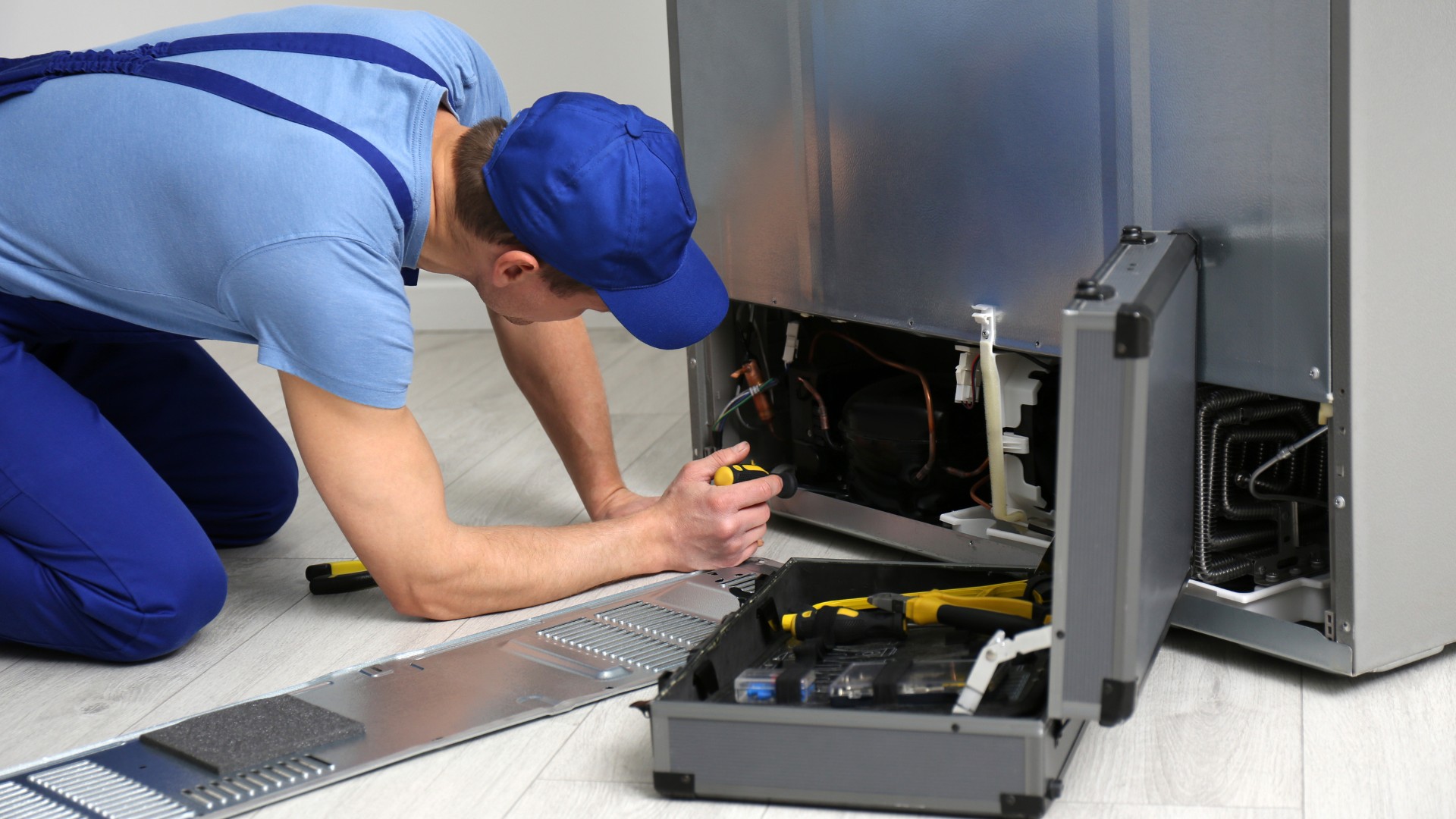

Articles
How To Fix Refrigerator Tripping Breaker
Modified: October 20, 2024
Learn how to fix a refrigerator that keeps tripping the breaker with these helpful articles.
(Many of the links in this article redirect to a specific reviewed product. Your purchase of these products through affiliate links helps to generate commission for Storables.com, at no extra cost. Learn more)
Introduction
A refrigerator is an essential appliance in any household, preserving our food and keeping it fresh. However, there may be instances when your refrigerator trips the breaker, causing inconvenience and potentially leading to spoiled groceries. Understanding the common causes of a refrigerator tripping the breaker can help you troubleshoot the issue and find a solution.
When a refrigerator trips the breaker, it means that the electrical circuit that powers the appliance has been overloaded or short-circuited. This can happen for various reasons, such as a faulty power cord, a problem with the outlet, or issues with the refrigerator’s components.
In this article, we will guide you through the steps to fix a refrigerator tripping the breaker. We will cover common causes, how to check the circuit breaker, inspect the power cord, examine the outlet, test the refrigerator’s components, clean the condenser coils, verify the door seal, and adjust the temperature settings. By following these steps, you can hopefully resolve the issue and get your refrigerator back up and running.
Before we dive into the troubleshooting steps, it’s important to note that electrical work can be dangerous, and if you are not comfortable working with electricity, it is best to seek the assistance of a professional electrician. Safety should always be a top priority when dealing with any electrical issue.
Now, let’s explore the common causes of a refrigerator tripping the breaker and how to address them.
Key Takeaways:
- Troubleshoot and resolve refrigerator breaker trips by checking the circuit breaker, inspecting the power cord, and testing components. Regular maintenance, such as cleaning condenser coils and verifying the door seal, can prevent future issues.
- Prioritize safety and seek professional assistance if uncomfortable with electrical work. Adjusting temperature settings and avoiding circuit overloading can help maintain a reliable and efficient refrigerator.
Read more: Why Breakers Trip
Common Causes of a Refrigerator Tripping Breaker
When your refrigerator keeps tripping the breaker, it can be frustrating and inconvenient. Understanding the common causes behind this issue can help you identify and address the problem.
1. Overloaded Circuit: One of the main causes of a refrigerator tripping the breaker is an overloaded circuit. Refrigerators require a significant amount of power to run, especially when the compressor kicks in. If the circuit is already carrying too much load from other appliances, it can cause the breaker to trip. To resolve this issue, consider redistributing the electrical load by plugging the refrigerator into a different circuit.
2. Faulty Power Cord: A frayed or damaged power cord can cause a short circuit and result in the breaker tripping. Inspect the power cord for any visible signs of damage, such as cuts or exposed wires. If you notice any issues, it’s important to replace the power cord with a new one to ensure safe and uninterrupted operation of the refrigerator.
3. Outlet Problems: Sometimes, the problem lies with the outlet itself. Loose connections or faulty wiring can cause the breaker to trip. Check the outlet by plugging in another appliance and see if it trips the breaker as well. If it does, the issue is likely with the outlet, and you should contact a professional electrician to repair or replace it.
4. Defective Components: Faulty components within the refrigerator, such as the compressor or the motor, can also lead to the breaker tripping. In some cases, these components may draw excessive power or cause a short circuit, triggering the breaker. It is recommended to contact a professional appliance repair technician to diagnose and replace any defective components.
5. Refrigerator Overheating: Overheating is another common cause of a refrigerator tripping the breaker. When the condenser coils are clogged with dust and dirt, heat is not dissipated effectively, causing the compressor to work harder and overheat. This can lead to excessive power consumption and the breaker tripping. Regularly cleaning the condenser coils can help prevent overheating and ensure the efficient operation of the refrigerator.
By understanding these common causes of a refrigerator tripping the breaker, you can take the necessary steps to diagnose and resolve the issue. Next, we will guide you through the process of checking the circuit breaker to determine if that is the source of the problem.
Checking the Circuit Breaker
When your refrigerator trips the breaker, the first step is to check the circuit breaker in your electrical panel. The circuit breaker is designed to protect the electrical circuit from overloading and short circuits. Here’s how to check if the circuit breaker is the culprit:
- Locate the Electrical Panel: Find the electrical panel in your home, commonly located in the basement, utility room, or garage. Open the panel door to reveal the circuit breakers.
- Identify the Refrigerator’s Circuit Breaker: Look for the circuit breaker that corresponds to your refrigerator. It is typically labeled with the designated area or appliance it serves. Check if the breaker is in the “tripped” position, meaning it is halfway between the “on” and “off” positions.
- Reset the Tripped Breaker: To reset a tripped breaker, firmly push it to the “off” position and then switch it back to the “on” position. You should hear a click indicating it has reset.
- Observe the Breaker: After resetting the breaker, observe if it holds or trips again. If it holds and the refrigerator starts working, the issue may have been a temporary power surge or overload. However, if the breaker trips again immediately or shortly after resetting, proceed to the next troubleshooting steps.
Note: If you are unsure which breaker corresponds to your refrigerator, you can try unplugging the refrigerator or turning it off temporarily. Then, observe which breaker shuts off or trips when you attempt to turn the refrigerator back on. This will help you identify the correct breaker to reset.
If the circuit breaker continues to trip after resetting, it is advisable to seek professional assistance from a licensed electrician. They will have the expertise and tools to diagnose the electrical issue and make any necessary repairs.
Next, we will discuss how to inspect the power cord for any potential problems that could be causing your refrigerator to trip the breaker.
Inspecting the Power Cord
After checking the circuit breaker and ensuring it is not the cause of your refrigerator tripping, the next step is to inspect the power cord. A damaged or faulty power cord can result in a short circuit, leading to the breaker being tripped. Here’s how to inspect the power cord:
- Unplug the Refrigerator: Before inspecting the power cord, make sure to unplug the refrigerator from the electrical outlet. This is crucial for your safety during the inspection process.
- Examine the Power Cord: Carefully examine the entire length of the power cord, looking for any visible signs of damage, such as fraying, cuts, or exposed wires. Pay special attention to areas near the plug and where the cord enters the refrigerator.
- Check the Plug: Inspect the plug for any signs of damage or bent prongs. Ensure that it is not loose when plugged into the outlet.
- Plug into a Different Outlet: If you suspect that the current outlet may be faulty, try plugging the refrigerator into a different outlet in another room using a properly grounded extension cord. This will help determine if the issue lies with the outlet rather than the power cord.
If you notice any damage to the power cord, it is crucial to replace it with a new one as soon as possible. Using a damaged power cord can be hazardous and may result in further electrical problems or even a fire.
When replacing the power cord, ensure that you are using a cord that is compatible with the refrigerator model and meets safety standards. If you are unsure about how to replace the power cord, it is best to consult a professional appliance technician or an electrician to assist you.
If the power cord appears to be in good condition and properly plugged in, and the refrigerator still continues to trip the breaker, it’s time to move on to the next troubleshooting step – examining the outlet.
Examining the Outlet
If your refrigerator continues to trip the breaker even after checking the circuit breaker and inspecting the power cord, it’s time to examine the outlet. A faulty or damaged outlet can cause electrical issues that lead to the breaker being tripped. Follow these steps to examine the outlet:
- Turn Off the Power: Before examining the outlet, ensure that you turn off the power to the circuit by switching off the corresponding breaker in the electrical panel.
- Remove the Cover Plate: Use a screwdriver to carefully remove the cover plate of the outlet. This will expose the wiring and connections.
- Inspect the Outlet and Wiring: Look for any visible signs of damage, such as loose wires, burnt marks, or discoloration. Check that the wires are securely connected and there are no loose terminals or exposed copper wire.
- Check for Grounding: A properly grounded outlet is essential for ensuring the safe operation of electrical appliances. Verify that the outlet has a grounding wire (usually green) attached to the grounding screw or a metal grounding box. If the outlet is not grounded, it may need to be replaced or upgraded by a qualified electrician.
- Test with a Multimeter: If you have access to a multimeter, you can test the outlet for proper voltage. Set the multimeter to the AC voltage setting and insert the red and black probes into the corresponding slots of the outlet. It should read the standard voltage (110-120 volts).
If you notice any obvious issues, such as loose wires or burnt marks, it is best to contact a licensed electrician to repair or replace the outlet. Electrical work can be dangerous, and it’s important to have a professional handle any repairs.
If the outlet appears to be in good condition and properly wired, and the refrigerator still trips the breaker, it’s time to move on to the next troubleshooting step – testing the refrigerator’s components.
Check for any frayed or damaged cords, and make sure the refrigerator is not plugged into a overloaded circuit. If the problem persists, consult a professional technician.
Read more: What Causes HVAC Breaker To Trip
Testing the Refrigerator’s Components
If your refrigerator continues to trip the breaker even after checking the circuit breaker, inspecting the power cord, and examining the outlet, it’s important to test the refrigerator’s components. Faulty components within the refrigerator can cause electrical issues that lead to the breaker being tripped. Here’s how to test the components:
- Unplug the Refrigerator: Before testing the components, make sure to unplug the refrigerator from the electrical outlet. This is crucial for your safety during the testing process.
- Compressor and Motor: The compressor and motor are integral components of the refrigerator. A faulty compressor or motor can draw excessive power or cause a short circuit, resulting in the breaker tripping. Contact a professional appliance repair technician to inspect and test these components.
- Start Capacitor: The start capacitor helps the compressor start up. If it is defective, it can cause the compressor to draw excessive power and trip the breaker. A technician can test the start capacitor using specialized equipment and replace it if necessary.
- Defrost Heater: The defrost heater removes frost buildup from the evaporator coils. A malfunctioning defrost heater may cause the refrigerator to run longer than usual and potentially trip the breaker. A technician can test the continuity of the defrost heater to determine if it is working properly.
- Thermostat: The thermostat regulates the temperature inside the refrigerator. A faulty thermostat can cause the compressor to run continuously, leading to excessive power consumption and a potential breaker trip. A technician can test the thermostat for accuracy and replace it if needed.
- Other Components: There are various other components within the refrigerator that could contribute to the breaker tripping, such as the evaporator fan, condenser fan, and defrost timer. Only a professional appliance technician with the necessary equipment and expertise should diagnose and test these components.
Testing and repairing the internal components of a refrigerator can be complex and hazardous. It is recommended to contact a professional appliance repair technician who specializes in refrigerators. They have the knowledge and experience to accurately diagnose and repair any component issues, ensuring the safe and efficient operation of your refrigerator.
If all the components are functioning properly and the refrigerator still trips the breaker, it’s time to explore other potential troubleshooting steps, such as cleaning the condenser coils or verifying the door seal.
Cleaning the Condenser Coils
If your refrigerator continues to trip the breaker despite checking the circuit breaker, the power cord, examining the outlet, and testing the refrigerator’s components, it’s important to consider the condition of the condenser coils. Dirty or clogged condenser coils can cause the refrigerator to overheat, leading to excessive power consumption and potentially tripping the breaker. Here’s how to clean the condenser coils:
- Locate the Condenser Coils: The condenser coils are typically located at the back of the refrigerator or underneath it, behind the kick plate. Consult your refrigerator’s manual to identify the exact location of the condenser coils.
- Unplug the Refrigerator: Before cleaning the condenser coils, ensure that you unplug the refrigerator from the electrical outlet. This is important for your safety during the cleaning process.
- Remove Dust and Debris: Use a brush or a vacuum cleaner with a crevice attachment to gently remove any accumulated dust, dirt, or debris from the condenser coils. Be careful not to bend or damage the delicate fins of the coils.
- Clean Finer Dust: If there is finer dust or residue sticking to the coils, you can use a coil cleaning brush or a soft cloth dampened with a mild detergent solution to wipe them down. Ensure that the coils are completely dry before plugging in the refrigerator.
- Check the Fan: While cleaning the condenser coils, it’s a good idea to inspect the fan located near the coils. Make sure the fan is clean and free from any obstructions that could hinder its airflow.
Regularly cleaning the condenser coils is essential for maintaining the efficiency and proper functioning of your refrigerator. By keeping the coils clean and free from debris, you can help prevent overheating, reduce power consumption, and decrease the likelihood of the breaker tripping.
If cleaning the condenser coils doesn’t resolve the issue and your refrigerator continues to trip the breaker, it’s time to move on to the next troubleshooting step – verifying the door seal.
Verifying the Door Seal
A faulty or compromised door seal can cause air leakage inside the refrigerator, leading to excessive cooling and increased energy consumption. This strain on the refrigerator’s system can potentially trip the breaker. Verifying the door seal and ensuring it is in good condition is an important troubleshooting step. Here’s how to do it:
- Inspect the Door Seal: Take a close look at the door seal, also known as the gasket, for any signs of damage, such as cracks, tears, or wear. Check all sides of the seal, including the corners, for any gaps or irregularities.
- Close the Door and Check for Resistance: Close the refrigerator door and pay attention to the resistance you feel when pulling it open. A properly sealed door should provide some resistance, indicating that the seal is creating a tight closure. If the door feels loose or easily opens without resistance, it may indicate a problem with the door seal.
- Perform the Dollar Bill Test: To further test the effectiveness of the door seal, place a dollar bill between the door and the refrigerator frame. Close the door and try to pull out the dollar bill. If it slides out easily with little to no resistance, it suggests that the door seal is not sealing properly and may need to be replaced.
- Clean the Door Seal: Sometimes, a dirty door seal can prevent it from creating a proper seal. Use a mild detergent and warm water to clean the door seal, removing any debris or residue that may be interfering with its effectiveness. Ensure that the seal is completely dry before closing the door.
- Replace the Door Seal: If the door seal is damaged, worn, or not sealing properly, it’s crucial to replace it. Contact the refrigerator manufacturer or a professional appliance technician to obtain a suitable replacement seal and follow the manufacturer’s instructions for installation.
A properly functioning door seal is essential for maintaining the temperature and efficiency of your refrigerator. By ensuring a tight seal, you can reduce energy consumption and prevent the refrigerator from tripping the breaker due to excessive cooling. Regularly inspecting and maintaining the door seal will help keep your refrigerator running smoothly.
If verifying the door seal doesn’t resolve the issue and your refrigerator continues to trip the breaker, it’s recommended to consult a professional appliance repair technician for further assistance.
Adjusting the Temperature Settings
Improper temperature settings in your refrigerator can cause it to work harder than necessary, leading to increased energy consumption and potentially tripping the breaker. Adjusting the temperature settings can help optimize the performance of your refrigerator and prevent such issues. Here’s how to do it:
- Refer to the Manufacturer’s Guidelines: Check the user manual or the manufacturer’s website for specific recommendations on the ideal temperature settings for your refrigerator. Different models may have different optimal temperature ranges.
- Cooling Section: Locate the temperature control dial or buttons in the cooling section of your refrigerator. Depending on the model, it may be located inside the fridge or on the control panel on the front of the appliance.
- Adjust the Refrigerator Temperature: The temperature control settings are usually labeled with numbers or indicators such as “warmer” and “cooler.” Gradually adjust the temperature to a slightly higher or lower setting, depending on your needs. Observe the refrigerator’s performance over the next few days to see if the adjustment resolves the issue of the breaker tripping.
- Adjust the Freezer Temperature: Similarly, locate the temperature control dial or buttons in the freezer section of your refrigerator. Adjust the freezer temperature according to the manufacturer’s guidelines or based on your preferences. Maintaining proper freezer temperature is important for efficient cooling and reducing strain on the refrigerator’s system.
- Monitor and Regularly Check the Temperatures: After making temperature adjustments, keep an eye on the refrigerator and freezer temperatures. Use a refrigerator thermometer to ensure that the temperatures are within the recommended ranges. This will help you determine if further adjustments are needed.
By properly adjusting the temperature settings, you can reduce the workload of your refrigerator and optimize its performance. This will not only help prevent the breaker from tripping but also contribute to energy efficiency and the longevity of the appliance.
If adjusting the temperature settings doesn’t solve the problem and your refrigerator continues to trip the breaker, it’s advisable to contact a professional appliance repair technician for a more in-depth assessment and potential repairs.
Read more: Why Do Arc Fault Breakers Trip
Conclusion
A refrigerator tripping the breaker can be a frustrating and inconvenient issue, but with proper troubleshooting and maintenance, it can be resolved. By following the steps outlined in this article, you can identify the common causes of a refrigerator tripping the breaker and take the necessary actions to fix the problem.
We started by checking the circuit breaker to ensure it is not the source of the issue. Then, we inspected the power cord for any damage and examined the outlet for any faulty wiring. If the problem persists, we moved on to testing the refrigerator’s components, such as the compressor, motor, and thermostat, to identify any potential issues that could be causing the breaker to trip.
If the components are functioning properly, we explored cleaning the condenser coils to prevent overheating and verifying the door seal to ensure proper insulation and temperature regulation. Lastly, we discussed the importance of adjusting the temperature settings to optimize the refrigerator’s performance and energy efficiency.
While these troubleshooting steps can help resolve common issues, it’s essential to prioritize safety and seek professional assistance if you are uncomfortable working with electricity or if the problem persists despite your efforts.
Maintaining your refrigerator through regular cleaning, inspection, and proper temperature settings is key to preventing breaker trips and ensuring the longevity of the appliance. Additionally, being mindful of overloading the circuit with other electrical devices can also help avoid future issues.
Remember, when it comes to electrical matters, safety is paramount. If you are uncertain or uncomfortable with any aspect of troubleshooting or repair, it is best to consult a licensed electrician or professional appliance repair technician who can provide expert guidance and assistance.
By diligently addressing the potential causes and taking appropriate action, you can resolve a refrigerator tripping the breaker and enjoy the convenience of a reliable and efficient appliance that keeps your food fresh and preserved.
Now that you've tackled fixing a refrigerator tripping breaker, why stop there? Your fridge could benefit from a bit more TLC. Dive deeper into maintaining your appliance with our detailed guide on refrigerator repair, where you'll find practical tips for keeping your fridge running smoothly. And don't forget about the ice maker! Regular cleaning is essential for optimal performance; learn how to easily clean your refrigerator's ice maker and ensure it's always in top condition. Keep your kitchen appliances at their best with these handy articles.
Frequently Asked Questions about How To Fix Refrigerator Tripping Breaker
Was this page helpful?
At Storables.com, we guarantee accurate and reliable information. Our content, validated by Expert Board Contributors, is crafted following stringent Editorial Policies. We're committed to providing you with well-researched, expert-backed insights for all your informational needs.
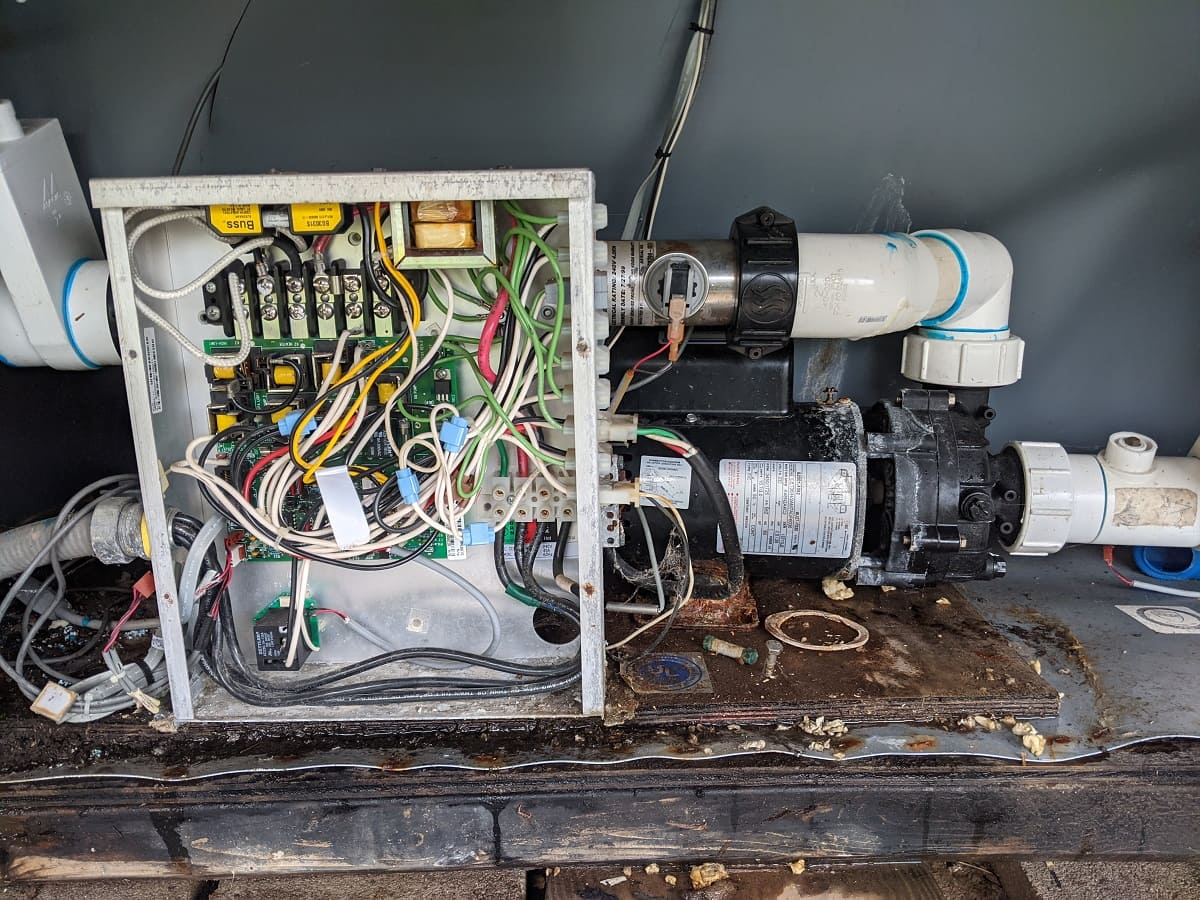
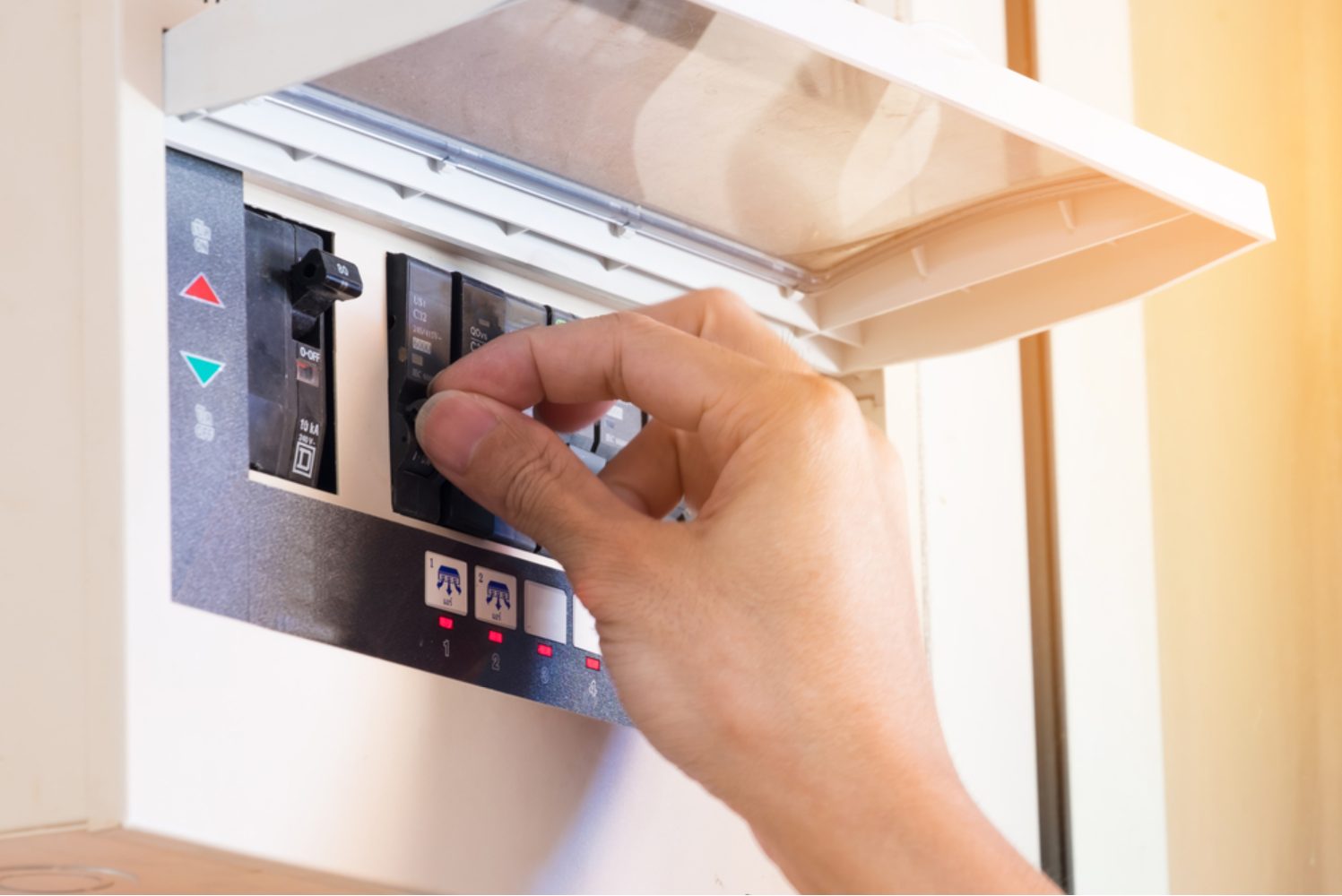
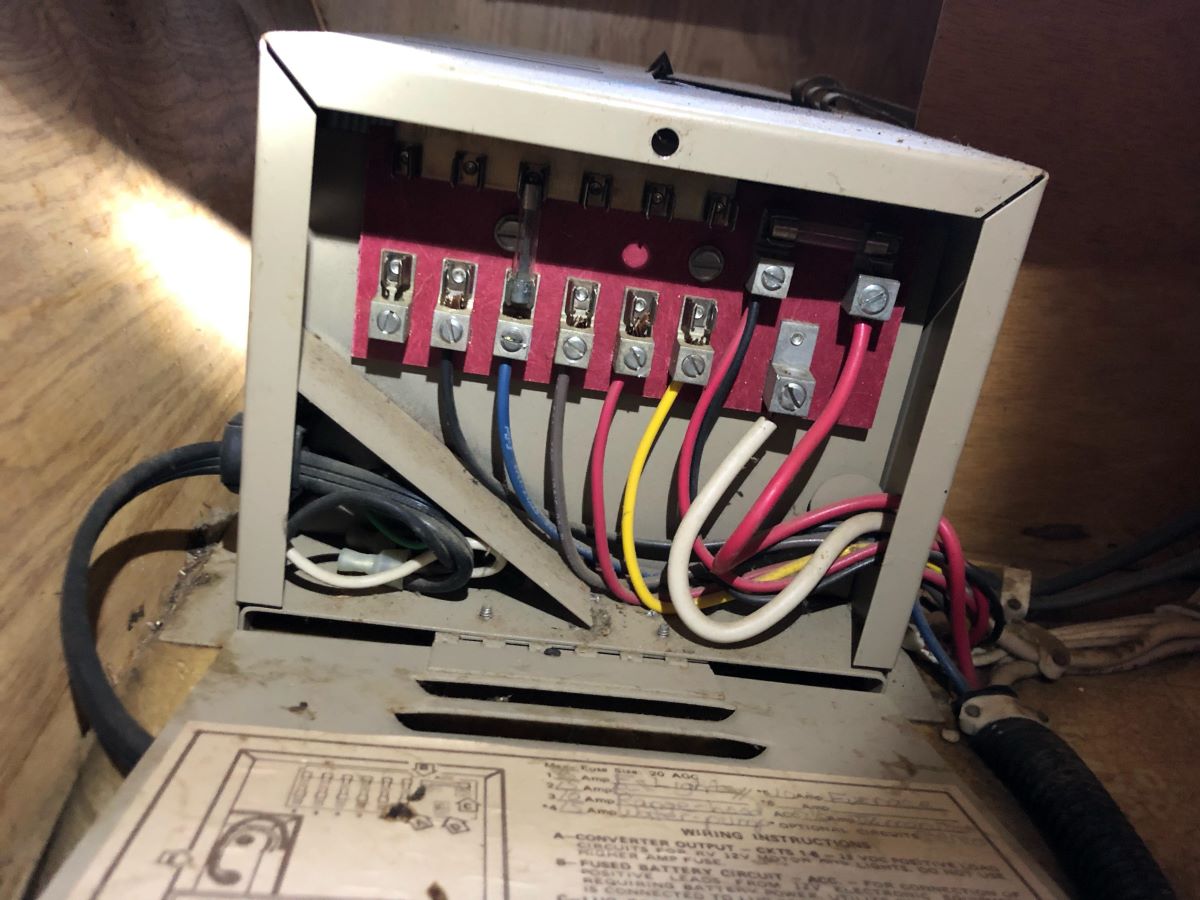
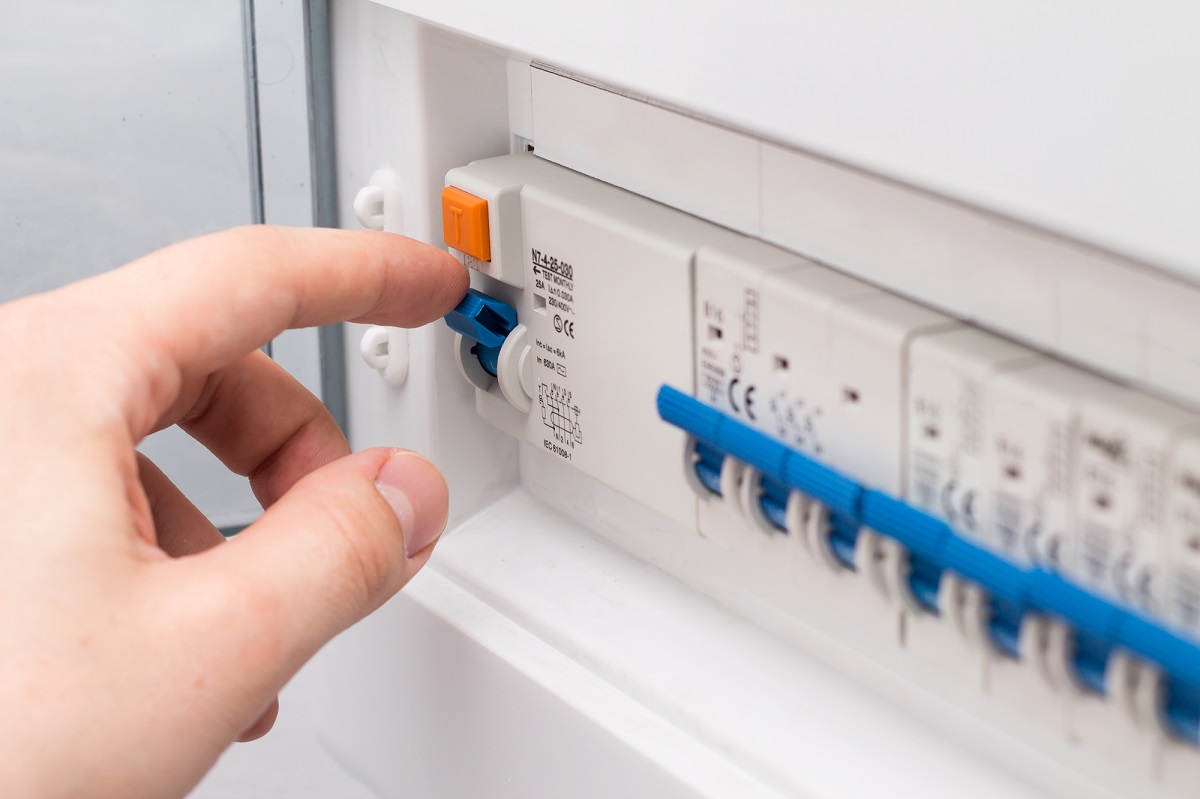
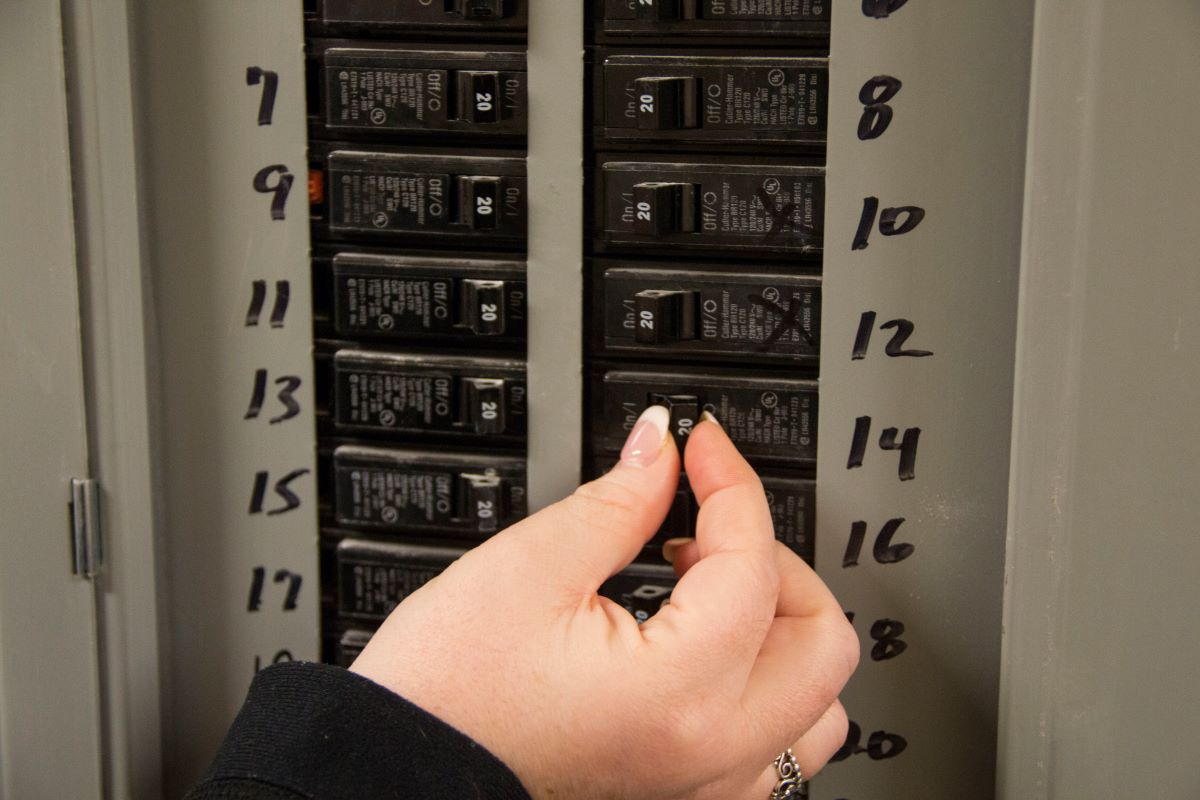
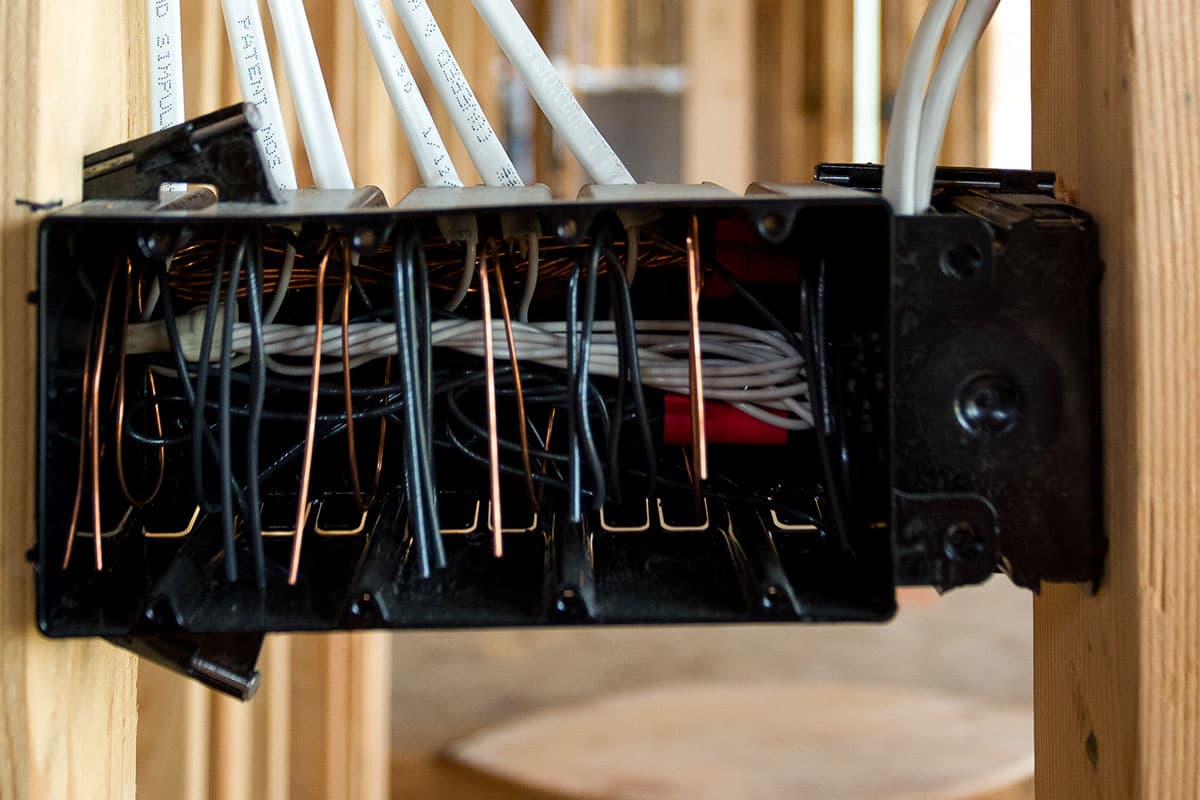
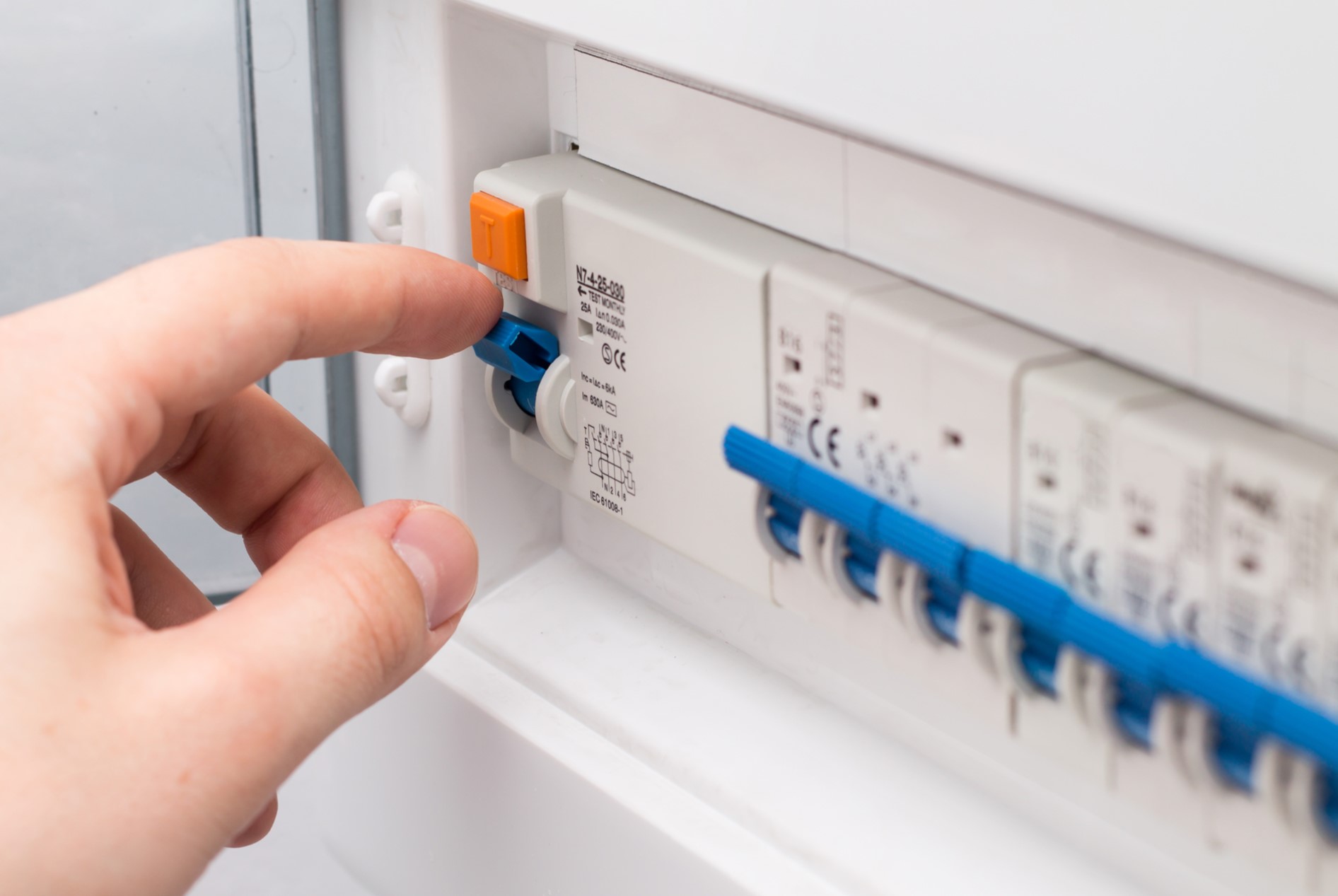
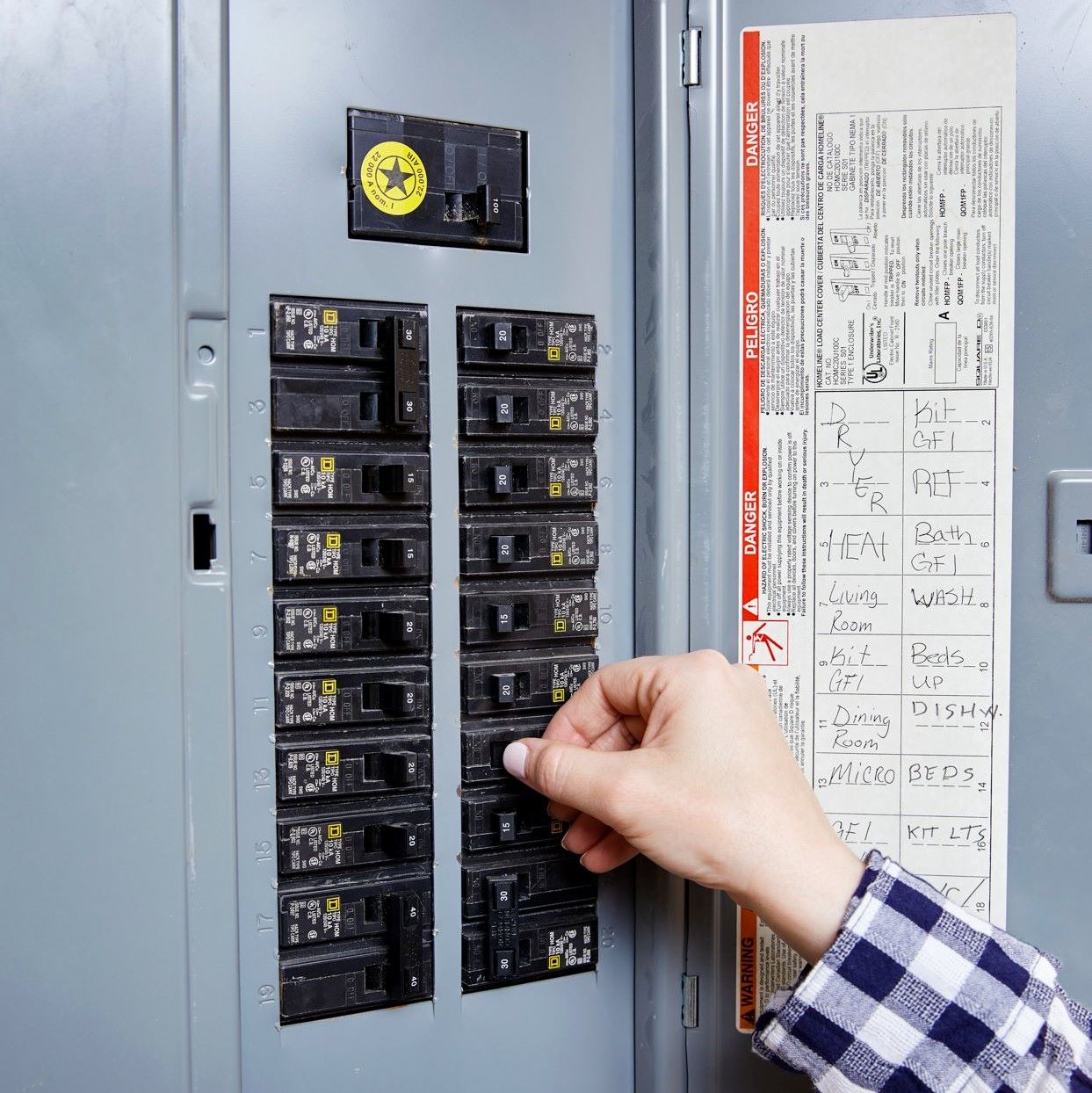
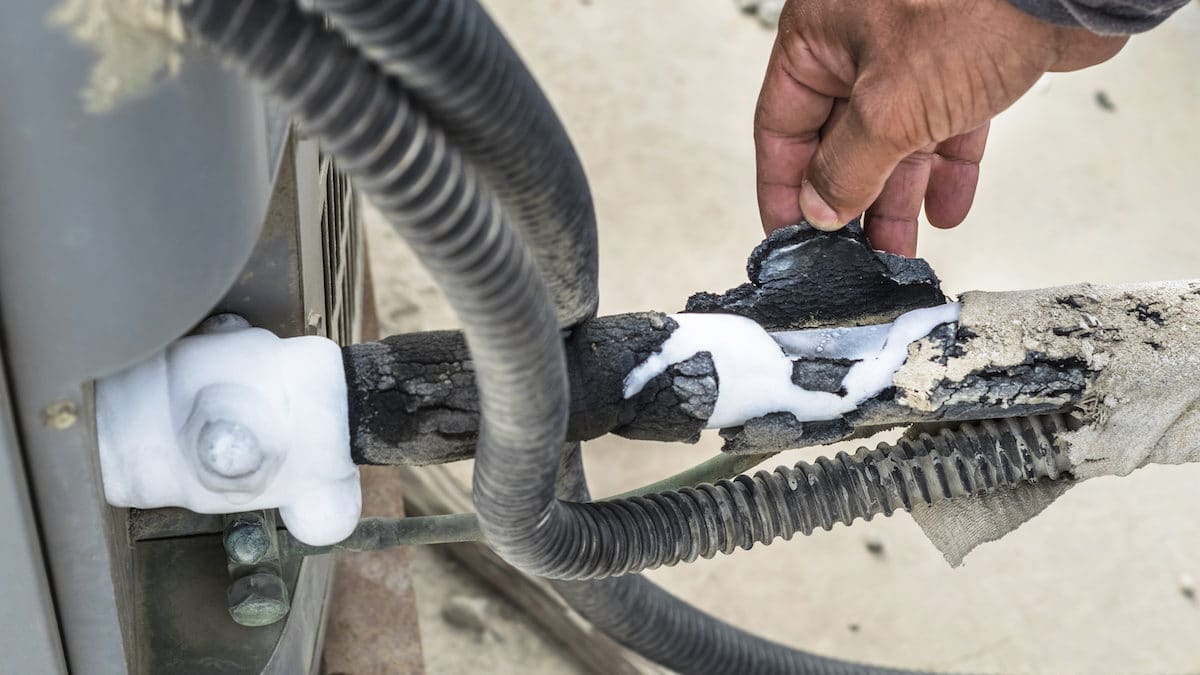

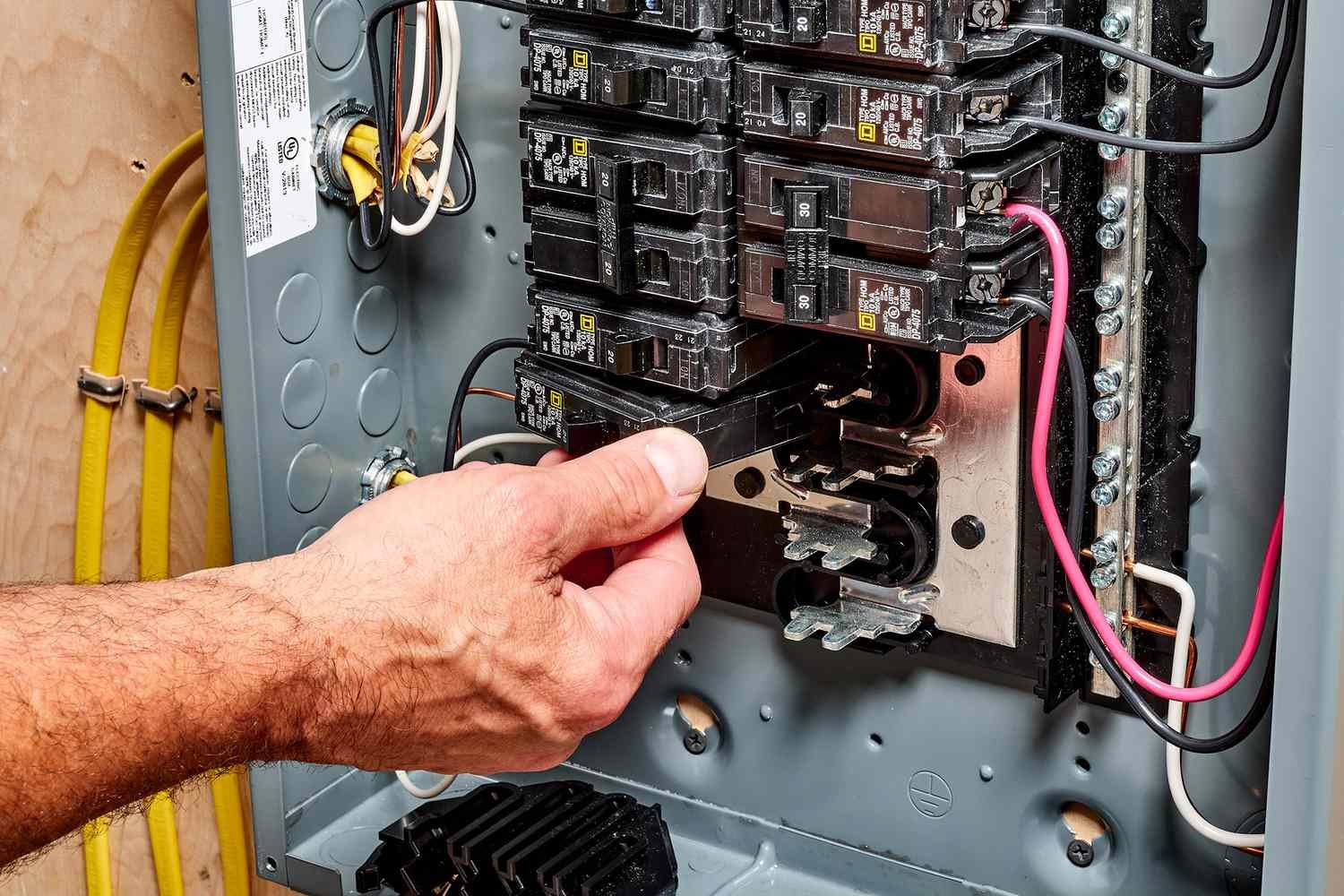
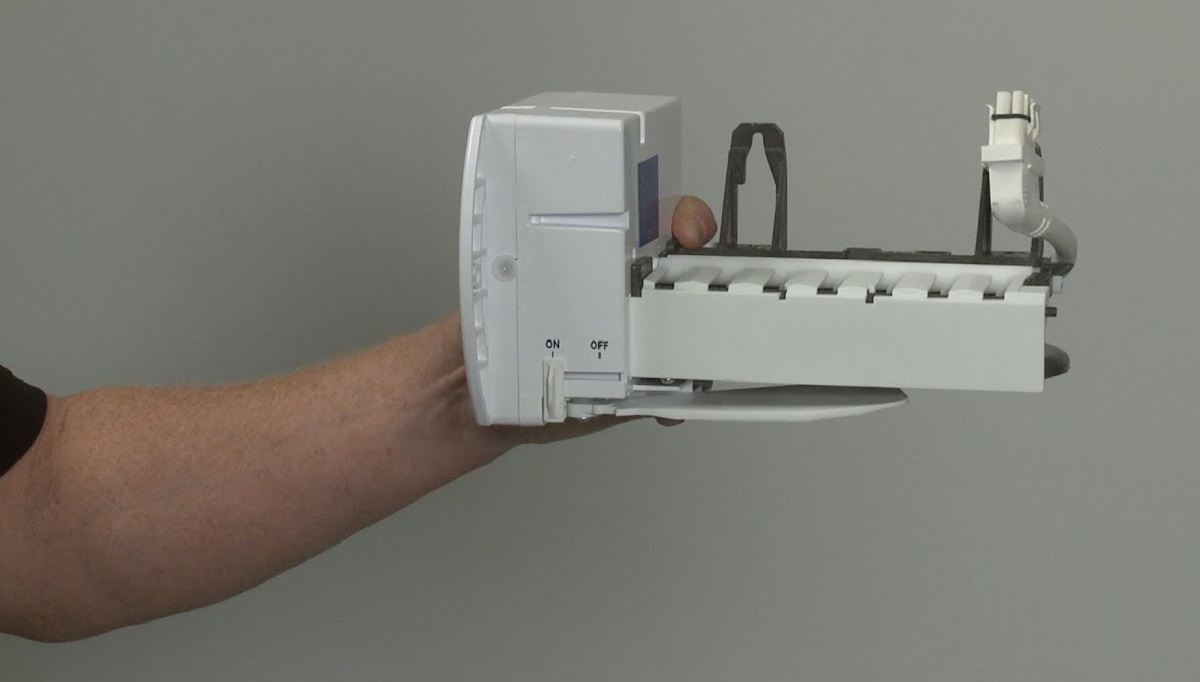
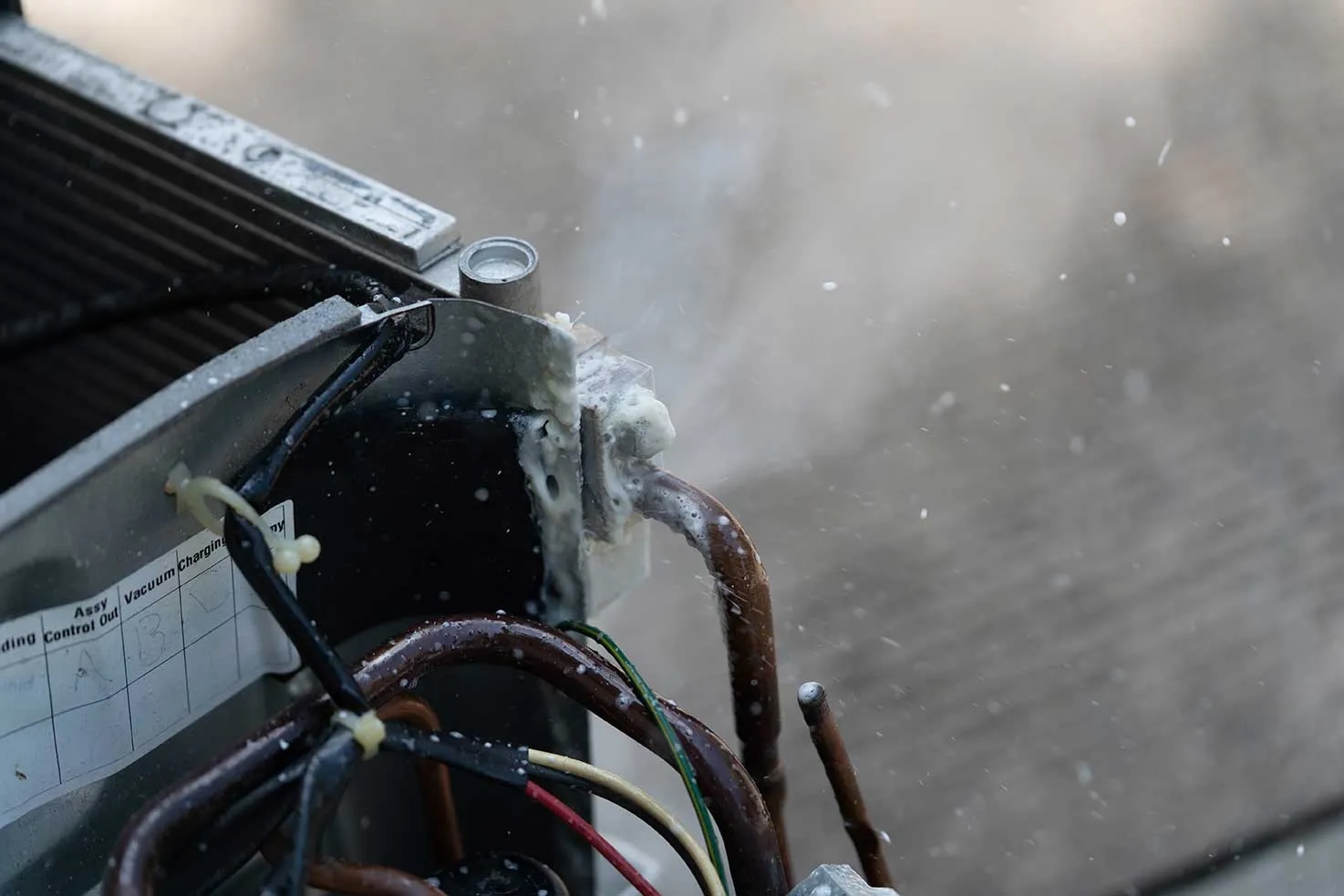

0 thoughts on “How To Fix Refrigerator Tripping Breaker”